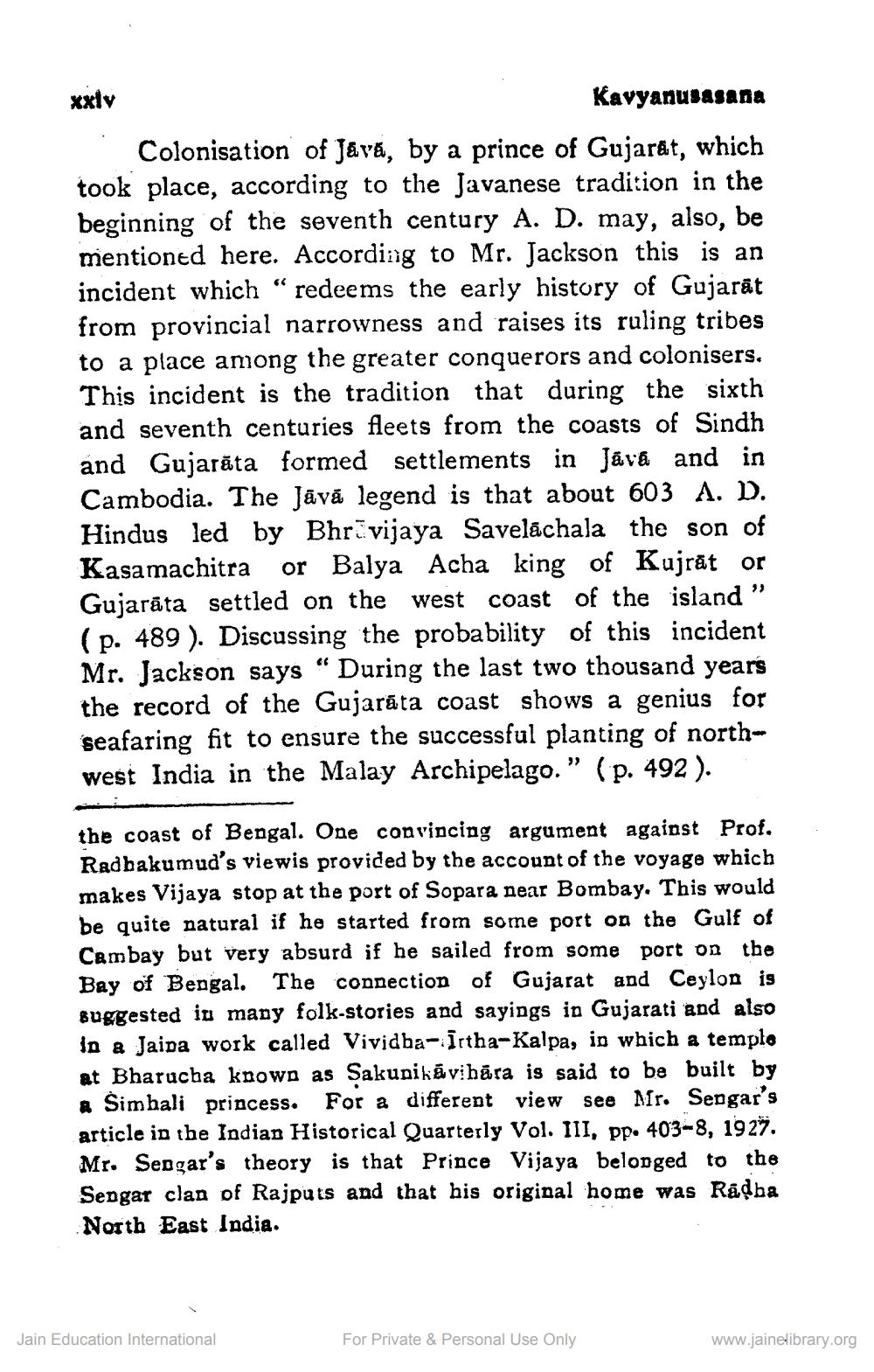________________
XXIV
Kavyanusasana
Colonisation of Java, by a prince of Gujarat, which took place, according to the Javanese tradition in the beginning of the seventh century A. D. may, also, be mentioned here. According to Mr. Jackson this is an incident which “redeems the early history of Gujarat from provincial narrowness and raises its ruling tribes to a place among the greater conquerors and colonisers. This incident is the tradition that during the sixth and seventh centuries fleets from the coasts of Sindh and Gujarāta formed settlements in Jāva and in Cambodia. The Jāvā legend is that about 603 A. D. Hindus led by Bhrūvijaya Saveláchala the son of Kasamachitra or Balya Acha king of Kujrat or Gujarāta settled on the west coast of the island" (p. 489 ). Discussing the probability of this incident Mr. Jackson says " During the last two thousand years the record of the Gujarāta coast shows a genius for seafaring fit to ensure the successful planting of northwest India in the Malay Archipelago." (p. 492).
the coast of Bengal. One convincing argument against Prof. Radbakumud's viewis provided by the account of the voyage which makes Vijaya stop at the port of Sopara near Bombay. This would be quite natural if he started from some port on the Gulf of Cambay but very absurd if he sailed from some port on the Bay of Bengal. The connection of Gujarat and Ceylon is suggested in many folk-stories and sayings in Gujarati and also in a Jaida work called Vividba- Īrtha-Kalpa, in which a templo at Bharucha known as Sakunikā vihāra is said to be built by a Simhali princess. For a different view see Mr. Sengar's article in the Indian Historical Quarterly Vol. III, pp. 403-8, 1927. Mr. Sepgar's theory is that Prince Vijaya belonged to the Sengar clan of Rajputs and that his original home was Rādba North East India.
Jain Education International
For Private & Personal Use Only
www.jainelibrary.org




